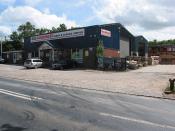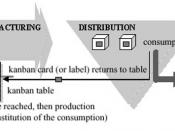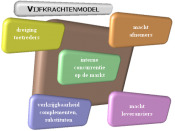Five Porter's Model
The five forces model was developed by Michael Porter in order to analyse the task environment. According to the model there are five competitive forces that affect a firm: the threat of entry by potential competitors, the power of buyers, the power of suppliers, the threat of substitute products, and the intensity of rivalry between already existing firms. Barriers of entry are factors that prevent the competitors to enter an industry and survive in the market. The cost reductions associated with large output in other words economies of scale describe the main barrier of entry. Brand loyalty is another barrier of entry, which shows the preference of consumers for the products of established companies. The colourful example of substantial brand loyalty is Cola and Pepsi. Bargaining power of buyers is the ability of buyers to bargain down prices charged by firms in the industry. The powerful buyers are a huge threat because they are able to press out the company 's profit by lowering prices and demanding better service.
Buyers are most powerful when: they are few in number and purchase large quantities, they can choose between equivalent products from many different firms, they can switch easily between the offerings of different firms. It is possible significantly reduce the bargaining power of buyers by switching costs. For instance, Microsoft's users are not only using Windows operating systems but the also have a library of software related applications. It is expensive for users to switch to another computer operating system and the easiest and cheapest way for them to stay with the same product. The bargaining power suppliers is the ability of suppliers to bargain up prices charged by firms in the industry or the raise the costs of firms in the industry by supplying lower-quality products and...


